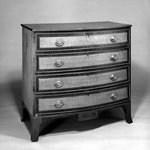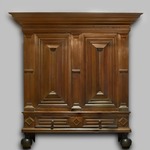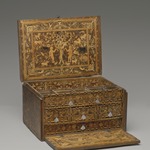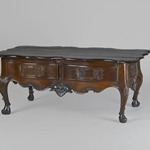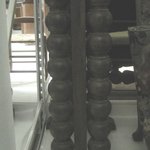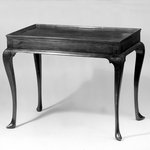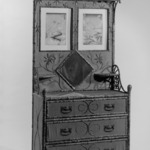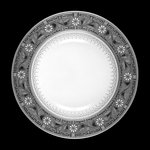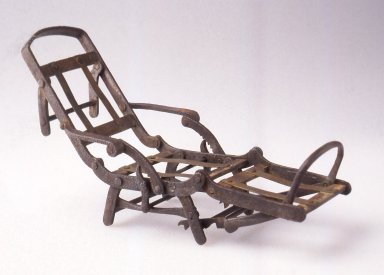
Patent Model, Mechanical Chair
Decorative Arts and Design
This rare surviving model of an adjustable chair was part of the process to secure a patent in the United States in the late nineteenth century. There were two types of patents: utility, or technical, patents and design patents. The later was for two-dimensional inventions such as carpet and textile designs. The former, more common type was for all other inventions, both mechanical and scientific. The patent process required three elements: a scaled, fully functional model not more than one foot square, detailed line drawings, and a letter describing the innovation. Inventors usually hired a lawyer to help secure the patent, and the lawyer in turn had contacts with professional model makers and draftsmen to render the detailed models and drawings. Once approved, the patent was good for up to seventeen years.
The government then placed the patent models on display in the United States Patent Office Building in Washington, D.C.
The requirement for the model was abandoned in the late 1880s, and the government sold off the vast majority of the models in the early twentieth century, thereby losing a visual history of late nineteenth-century technology.
The government then placed the patent models on display in the United States Patent Office Building in Washington, D.C.
The requirement for the model was abandoned in the late 1880s, and the government sold off the vast majority of the models in the early twentieth century, thereby losing a visual history of late nineteenth-century technology.
DESIGNER
Henry James
MEDIUM
Iron, brass
DATES
ca. 1872
DIMENSIONS
1 3/4 x 3 x 9 in. (4.5 x 7.6 x 22.8 cm) (show scale)



MARKINGS
Unmarked
COLLECTIONS
Decorative Arts and Design
ACCESSION NUMBER
1995.144
CREDIT LINE
Modernism Benefit Fund
CATALOGUE DESCRIPTION
Patent Model Mechanical Chair, iron and brass. Three-part frame consisting of back, seat, and leg rest, attached with pivoting joints. Outer frame of back is formed of elongated U-shaped strip of iron, which is supported by two iron strips riveted to the upper and lower half of back, and running horizontally across it. These are further reinforced by two brass strips riveted to iron strip supports and running vertically up back frame. Below upper iron strip support is a pivoting iron stand consisting of two short iron strips with rounded corners, joined together by an iron bar running horizontally from one to another at the lower end. Above lower iron strip support on either side are armrests, formed of bent iron strips. These strips are attached with pivoting joints to bent iron bars with notches cut in inner side, which are attached to outer frame of seat with pivoting joints. Outer frame of seat is formed of two iron strips with rounded corners curved horizontally into shallow U-shape. Outer frame is supported by two iron strips riveted to upper and lower halves of frame, running horizontally between each side outer frame. These are further reinforced by two brass strips riveted to iron supports and running vertically up seat frame. Next to attached notched arm piece on either side of outer seat frame is pointed iron strip with serpentine outline and attached with pivoting joint. Next to each iron strip support on either side of frame is riveted leg formed of short gently curved iron strip. An iron bar runs horizontally between two front legs, and between two back legs. An iron strip with concave curve in upper edge runs vertically between front and back leg on either side. Outer frame of leg rest formed of two iron strips, with gentle concave curve at upper end. Outer frame supported by two iron strips riveted to upper and lower sections and running horizontally across frame; further reinforced by two brass strips riveted to supporting iron strips and running vertically up frame. Just above lower supporting iron strip foot rest formed of semi-flattened iron bar bent into C-shape, and attached with pivoting joints on either side frame. Below footrest attached at same joints are two short iron strips with rounded corners, attached at lower ends with pivoting joints to two iron strips with notches cut in lower edge. Iron bar riveted to notched strips at outer end.
Condition: Overall condition good; iron somewhat rusted, brass tarnished.
MUSEUM LOCATION
This item is not on view
CAPTION
Henry James. Patent Model, Mechanical Chair, ca. 1872. Iron, brass, 1 3/4 x 3 x 9 in. (4.5 x 7.6 x 22.8 cm). Brooklyn Museum, Modernism Benefit Fund, 1995.144. Creative Commons-BY (Photo: Brooklyn Museum, CUR.1995.144.jpg)
IMAGE
overall, CUR.1995.144.jpg. Brooklyn Museum photograph, 2010
"CUR" at the beginning of an image file name means that the image was created by a curatorial staff member. These study images may be digital point-and-shoot photographs, when we don\'t yet have high-quality studio photography, or they may be scans of older negatives, slides, or photographic prints, providing historical documentation of the object.
RIGHTS STATEMENT
Creative Commons-BY
You may download and use Brooklyn Museum images of this three-dimensional work in accordance with a Creative Commons license. Fair use, as understood under the United States Copyright Act, may also apply.
Please include caption information from this page and credit the Brooklyn Museum. If you need a high resolution file, please fill out our online application form (charges apply).
For further information about copyright, we recommend resources at the United States Library of Congress, Cornell University, Copyright and Cultural Institutions: Guidelines for U.S. Libraries, Archives, and Museums, and Copyright Watch.
For more information about the Museum's rights project, including how rights types are assigned, please see our blog posts on copyright.
If you have any information regarding this work and rights to it, please contact copyright@brooklynmuseum.org.
RECORD COMPLETENESS
Not every record you will find here is complete. More information is available for some works than for others, and some entries have been updated more recently. Records are frequently reviewed and revised, and we welcome any additional information you might have.

